
Cyclops is a superhero appearing in American comic books published by Marvel Comics and is a founding member of the X-Men. Created by writer Stan Lee and artist/co-plotter Jack Kirby, the character first appeared in the comic book The X-Men. Cyclops is a member of a subspecies of humans known as mutants, who are born with superhuman abilities. Cyclops emits powerful beams of energy from his eyes, and can only control the beams with the aid of special eyewear which he must wear at all times. He is typically considered the first of the X-Men, a team of mutant heroes who fight for peace and equality between mutants and humans, and one of the team's primary leaders.

Colossus is a character appearing in American comic books published by Marvel Comics. Created by writer Len Wein and artist Dave Cockrum, he first appeared in Giant-Size X-Men #1.
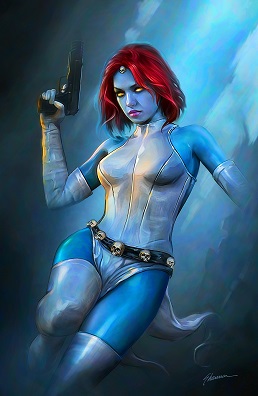
Mystique is a character appearing in American comic books published by Marvel Comics. Created by artist David Cockrum and writer Chris Claremont, the character first appeared in Ms. Marvel #16. A member of a subspecies of humanity known as mutants who are born with superhuman abilities, Mystique is a shapeshifter who can mimic the appearance and voice of any person with exquisite precision. Her natural appearance includes blue skin, red hair and yellow eyes.
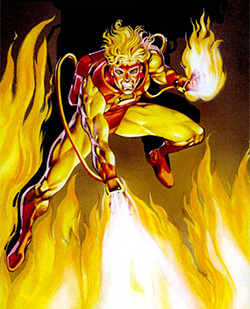
Pyro is the name of two fictional characters appearing in American comic books published by Marvel Comics.

The Brotherhood of Mutants is a fictional team appearing in American comic books published by Marvel Comics. The characters are depicted as being devoted to mutant superiority over normal humans. They are among the chief adversaries of the X-Men.

Toad is a fictional character appearing in American comic books published by Marvel Comics. Created by writer Stan Lee and artist/co-writer Jack Kirby, he first appeared in The X-Men #4.
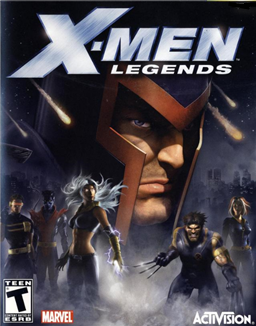
X-Men Legends is an action role-playing video game developed by Raven Software and published by Activision. It was released on the GameCube, PlayStation 2 and Xbox consoles in 2004. Barking Lizards Technologies developed the N-Gage port of the game, which was released in early 2005. Players can play as one of fifteen X-Men characters, with the ability to switch between four computer- or human-controlled characters at any time.
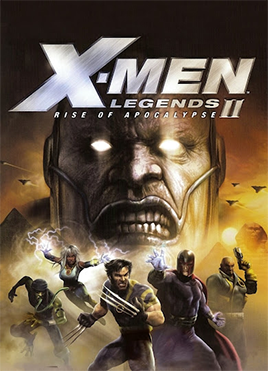
X-Men Legends II: Rise of Apocalypse is an action role-playing game developed primarily by Raven Software and published by Activision. It is the follow-up to 2004's X-Men Legends. It was released in September 2005 for the GameCube, Microsoft Windows, N-Gage, PlayStation 2, PlayStation Portable and Xbox. It is set after the events of X-Men Legends and features the mutant supervillain Apocalypse as the primary antagonist.
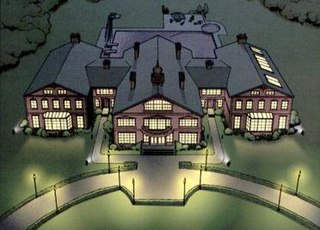
X-Mansion and Xavier Institute are the common names for a mansion and research institute appearing in American comic books published by Marvel Comics. The mansion is depicted as the private estate of Charles Francis Xavier, a character in X-Men comics. It serves as the base of operations and training site of the X-Men. It is also the location of an accredited private school for mutant children, teenagers, and sometimes older aged mutants, the Xavier Institute for Higher Learning, formerly the Xavier School for Gifted Youngsters. The X-Mansion is also the worldwide headquarters of the X-Corporation.

X-Men: Mutant Academy 2 is a 2.5D fighting game for the PlayStation video game console. It was developed by Paradox Development and published by Activision on September 18, 2001. It is the sequel to X-Men: Mutant Academy and predecessor to X-Men: Next Dimension.
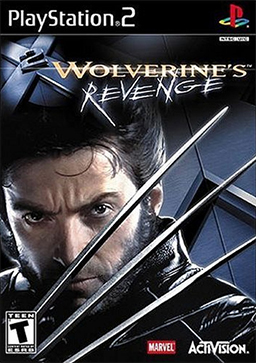
X2: Wolverine's Revenge is an action beat'em up video game based on Marvel Comics character Wolverine, a member of the mutant team X-Men, developed by British game developer GenePool Software and published by Activision for PlayStation 2, GameCube, and Xbox with the former developed by Warthog Games alongside GenePool and ported to Windows by LTI Gray Matter. It was released on April 15, 2003, to coincide with the release of the film X2, which itself is a sequel to the 2000 film X-Men. The Game Boy Advance version developed by Vicarious Visions was re-released on a Twin Pack cartridge and bundled with Spider-Man: Mysterio's Menace in 2005.
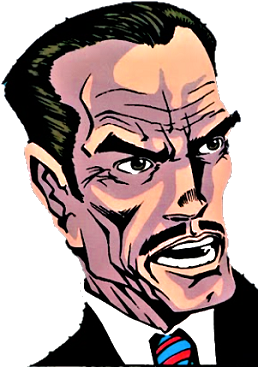
Bolivar Trask is a supervillain appearing in American comic books published by Marvel Comics. He is a military scientist whose company Trask Industries is well known as the creator of the Sentinels. He is also the father of Larry Trask and Madame Sanctity.

X-Men: The Official Game is the name of Activision's three tie-in video games to the 2006 film X-Men: The Last Stand. The game covers the events between the films X2 and X-Men: The Last Stand, specifically following the characters of Logan, Iceman, and Nightcrawler. It also bridges the gap between the two films, explaining why Nightcrawler is not present for The Last Stand, and also introduces new foes for the game, such as HYDRA.
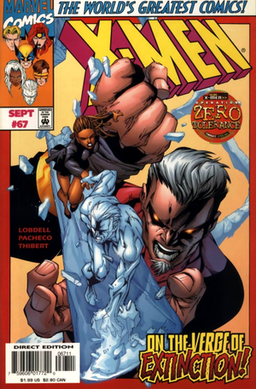
"Operation: Zero Tolerance" was a crossover storyline that ran through Marvel Comics' X-Men related titles during 1997. The story followed from the "Onslaught Saga" and focused on individuals, including Bastion and Henry Peter Gyrich, within the United States government and their attempts to use their positions to hunt and kill all mutants across the country. Within the story, the program is known as "Operation: Zero Tolerance".
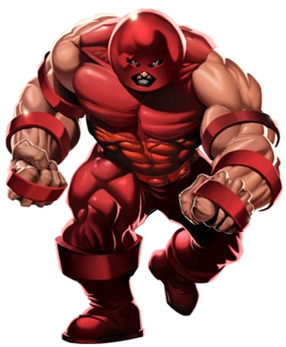
Juggernaut is a fictional character appearing in American comic books published by Marvel Comics. Created by writer Stan Lee and artist/co-writer Jack Kirby, he first appeared in X-Men #12 as an adversary of the eponymous superhero team. Since then, he has come into conflict with other heroes, primarily Spider-Man and the Hulk.
Magneto, a character appearing in American comic books published by Marvel Comics, has been included in almost every media adaptation of the X-Men franchise, including films, television series and video games.
This is a list of all media appearances of the Marvel Comics character Cyclops.
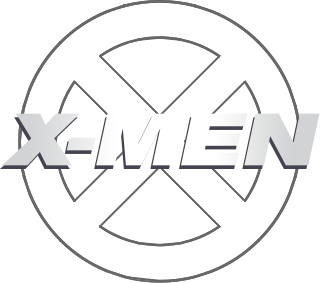
The X-Men are a fictional superhero team created by Marvel Comics that appear in comic books and other forms of media.

X-Men: Destiny is an action role-playing video game based on the X-Men comic book series. It was developed by Silicon Knights. Written by Mike Carey, the writer of the X-Men: Legacy comic book series, it was published and released by Activision for the Nintendo DS, PlayStation 3, Wii, and Xbox 360 consoles.

The Marvel Comics character Betsy Braddock has made many appearances in media other than comic books, including television, films, and video games. She has been voiced by Grey DeLisle, Heather Doerksen, and Tasha Simm in animation, and by Laura Bailey, Kimberly Brooks, Catherine Disher, Melissa Disney, Kim Mai Guest, Erica Lindbeck, Jane Luk, Masasa Moyo, and April Stewart in video games. In the X-Men film series, she was portrayed by Meiling Melançon and Olivia Munn.


















